Before diving into the different types of machine learning models, it's important to understand what machine learning is and some key terminology.
In simple terms,
Machine learning = machine learning refers to the process of computers learning from data, identifying patterns, and making predictions based on that data.
Features = Features refer to the input (x) of a dataset.
Labels = Labels represent the output or target variable (y).
Types of machine learning
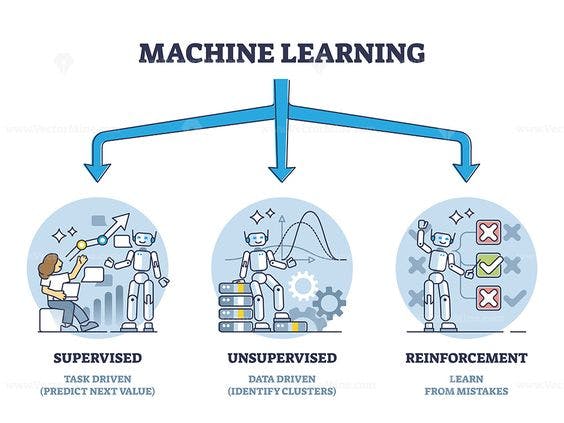
Supervised Learning
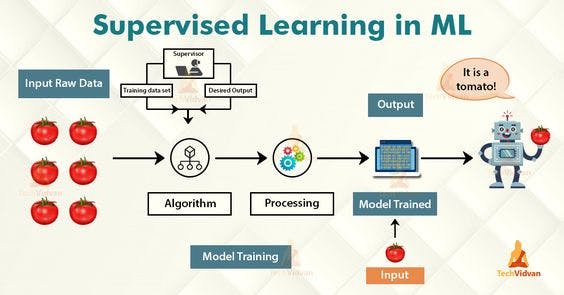
Supervised learning is a machine learning technique where the algorithm is trained on a labeled dataset consisting of both features and their corresponding labels.
The labeled dataset is used to train a model that can then be used to make predictions on new, unlabeled data. In supervised learning, the algorithm tries to learn the relationship between the features and the labels by iteratively adjusting its parameters until the predictions made by the model match the true labels in the training data. This approach is widely used in real-world models such as image classification, speech recognition, and natural language processing. The availability of labeled data is a key factor in the success of supervised learning, as the model's accuracy depends on the quality and quantity of the labeled data used for training.
There are two types of supervised learning:
Regression
label predicted by the model is a numeric value.The regression model provides a mathematical function that describes the relationship between the dependent variable (Y) and the independent variables (x). It helps us understand how changes in the independent variables impact the dependent variable.
Example:
Classification
The label represents a categorization or classA classification model is a predictive model that assigns data points to predefined classes or categories based on their features or attributes.
Examples: Email Spam Detector, Gender Prediction, Image Recognition,etc.
Unsupervised Learning
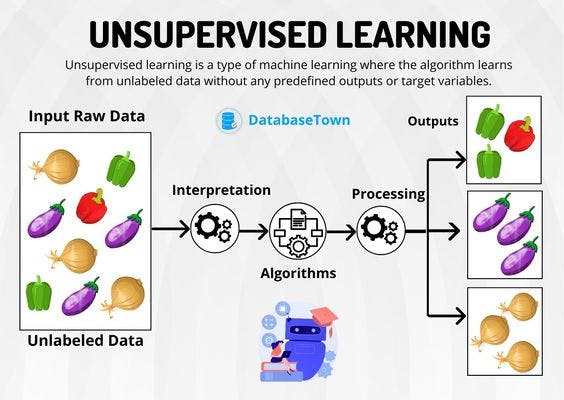
In unsupervised learning, a machine learning algorithm is trained on a dataset that does not have any labeled data. Unlike supervised learning, where the algorithm is trained on a labeled dataset, unsupervised learning is focused solely on finding patterns in the data.
The algorithm is responsible for identifying relationships between the different features of the data, clustering similar data points together, and discovering underlying structures within the data. This technique is particularly useful when working with large datasets, as it can help to identify hidden patterns and relationships that would be difficult to uncover through manual analysis.
Type of Unsupervised learning :
Clustering
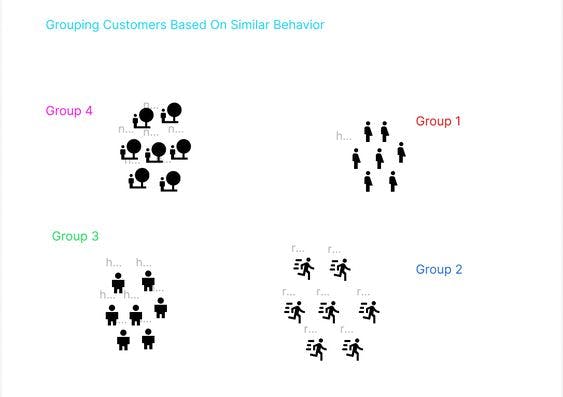
Clustering is a type of unsupervised learning where the system attempts to group similar data points together into clusters based on their features and characteristics.
The objective of clustering is to find patterns and relationships in the data that may not be obvious at first glance and to uncover hidden structures and insights that can be useful in various applications. Clustering can be applied in a wide range of domains, including customer segmentation, image analysis, anomaly detection, and many others.
Example: Group similar flowers based on their size, number of leaves, and number of petals.
Anamoly detection
Find unusual data points
ex: unusual financial transactions
Dimensionality reduction
compress data using fewer numbers.
Reinforcement Learning
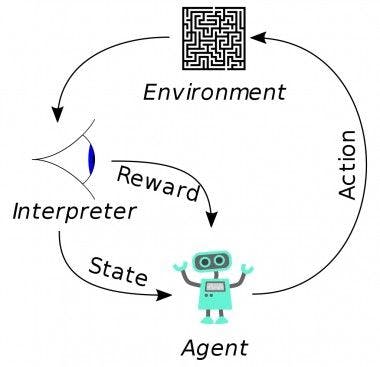
Reinforcement learning (RL) is an area of Machine Learning where an agent learns to make decisions by interacting with an environment
here are some key points,
Objective: RL aims to maximize cumulative rewards by taking suitable actions in a specific situation.
Trial and Error: Unlike supervised learning, where labeled data is available, RL learns from trial and error.
Components:
Agent: An entity that perceives its environment & acts upon that environment
Environment: The external system the agent interacts with.
State: The current situation or configuration.
Action: choices that can be made in a state.
Reward: Feedback received after each action.
Example: The robot learns by trying different paths, receiving rewards for correct steps, and penalties for wrong ones.
Summary
Thanks for reading this article! If you have any feedback or questions, just drop them in the comments and I'll get back to you.
connect with me on Twitter , Linkedin, and Hashnode . Let's stay in touch :)!!


